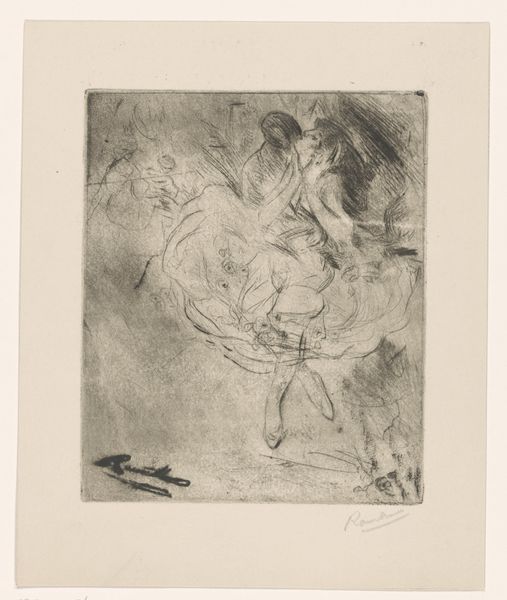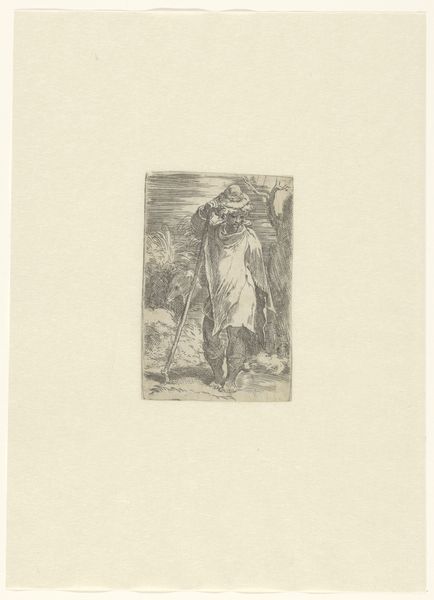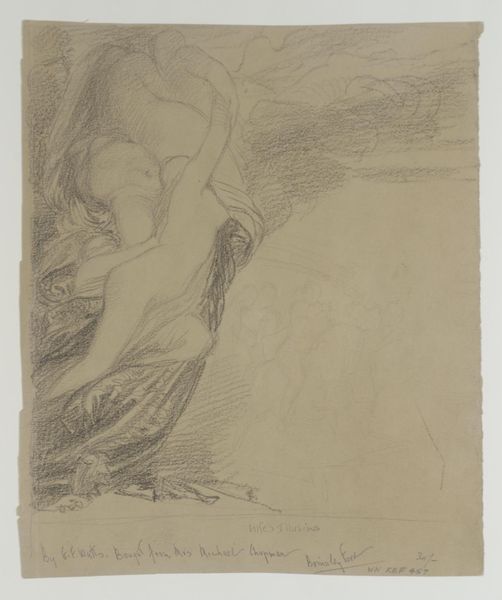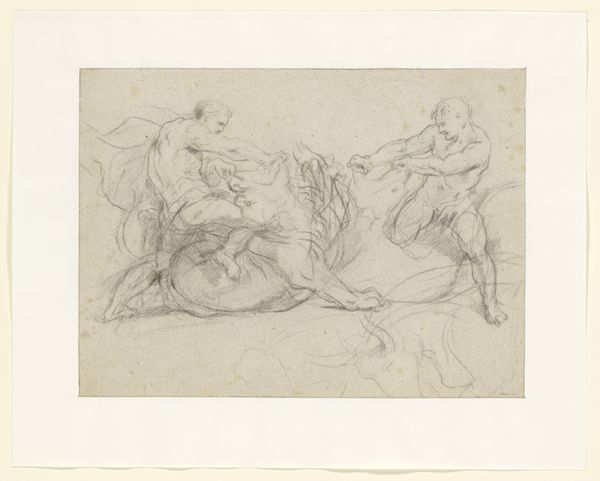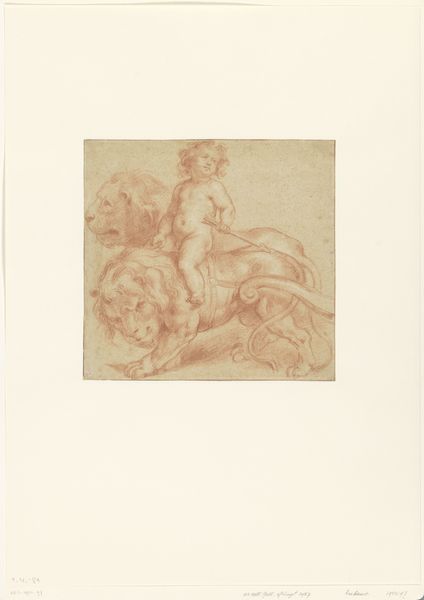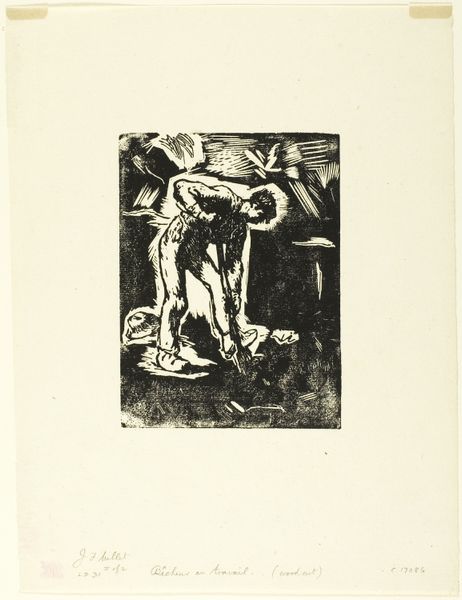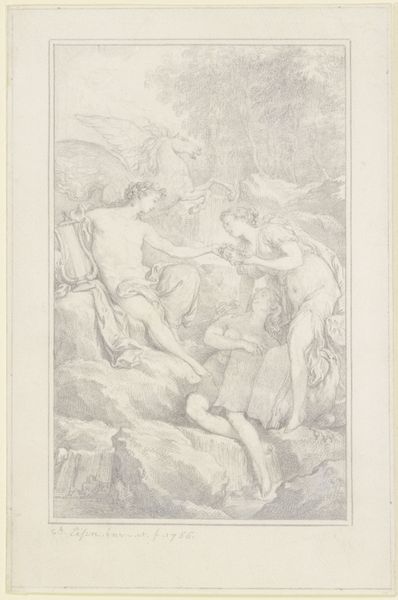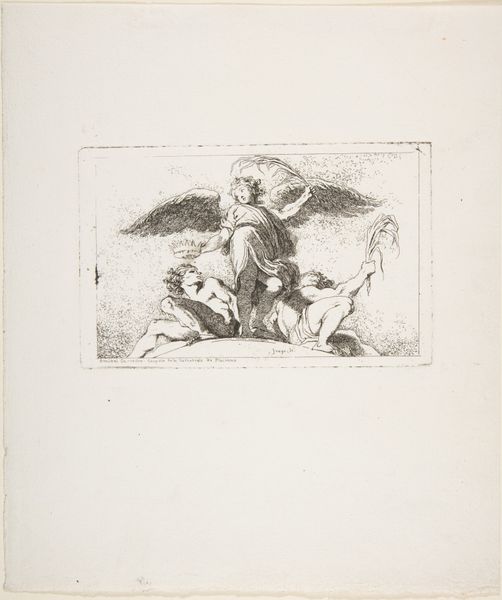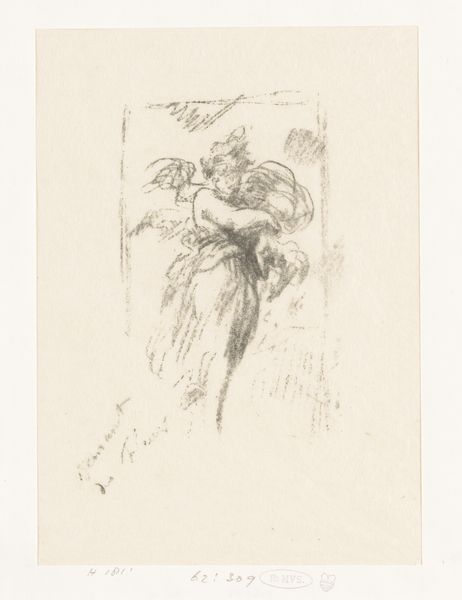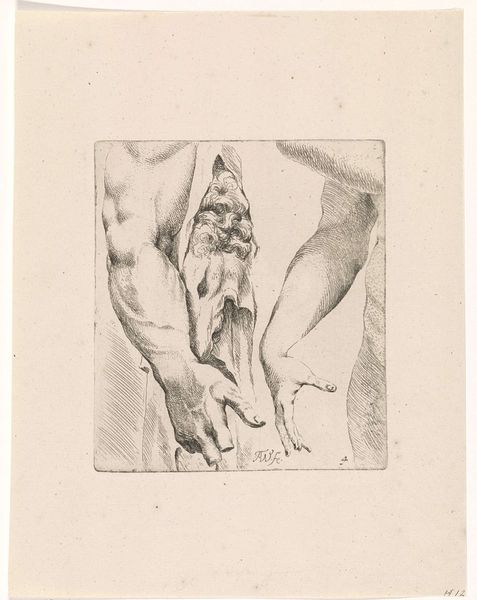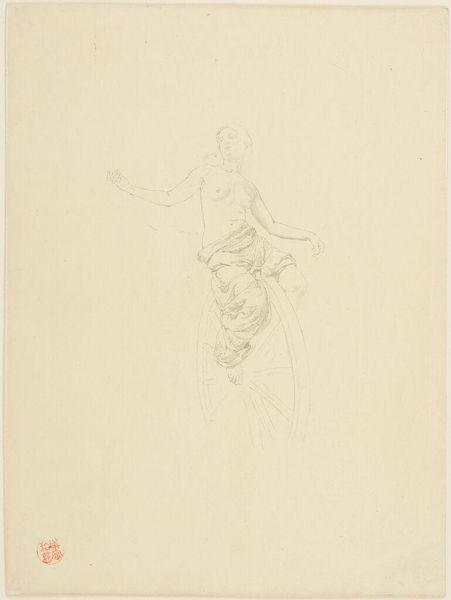
drawing, paper, pencil, engraving
#
portrait
#
drawing
#
pencil sketch
#
old engraving style
#
figuration
#
paper
#
romanticism
#
pencil
#
sketchbook drawing
#
history-painting
#
academic-art
#
engraving
Dimensions: height 285 mm, width 210 mm, height 445 mm, width 360 mm
Copyright: Rijks Museum: Open Domain
Editor: This is "Duivelsfiguur," or Devil Figure, created in 1821 by David-Pierre Giottino Humbert de Superville. It’s a drawing made with pencil, engraving, and other markings on paper and displayed at the Rijksmuseum. It reminds me of old textbook illustrations. What can you tell me about it? Curator: Well, looking at this, I’m immediately drawn to the materials. The interplay between pencil, engraving, and paper is key. It speaks volumes about artistic production in the 19th century, doesn’t it? The choice of inexpensive, readily available materials like pencil and paper suggests a particular type of art production, possibly sketches used for mass production by engraving. The means of reproduction, then, shape our experience of the "original" artwork. Editor: Mass production? So, not necessarily meant as a standalone art piece? Curator: Precisely! Consider the labor involved: the artist, the engraver, the paper manufacturer. Where did the materials come from, and under what conditions were they produced? Even the dissemination of these images through prints— who had access to them? These questions disrupt our romantic idea of the artist alone in their studio. Editor: That's a fascinating way to look at it. It makes me wonder about the societal value placed on these "lesser" forms of art. I've always admired more formal paintings but understanding the materiality has shifted my perspective. Curator: And that’s exactly the point! Challenging these artificial boundaries expands our appreciation and allows us to truly understand the artwork's significance in its own time, and even today. The materials are not secondary. They are the foundation of meaning. Editor: I see how analyzing the materials provides a totally different entry point. It encourages us to be aware of economic systems surrounding this sketch!
Comments
No comments
Be the first to comment and join the conversation on the ultimate creative platform.
